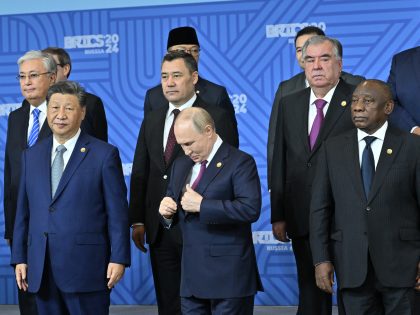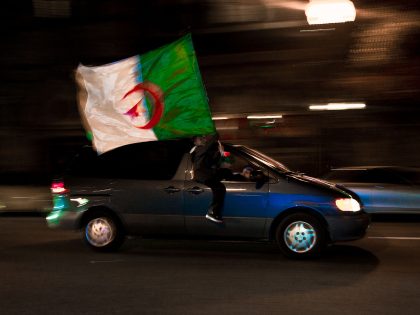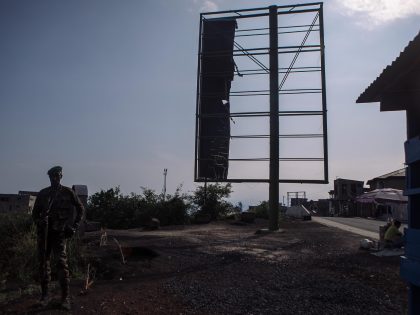Security Killings: American Police Violence, from Ferguson to Nairobi

The world watched U.S. tanks roll into Ferguson, Missouri in August 2014, in a misguided attempt to control protests over the police killing of Michael Brown. In the aftermath, the apparent militarization of local American police departments struck many critics as disproportionate force. It also tells us a great deal about the interconnections between U.S. foreign and domestic policy. These tanks not only illustrate the militarization of the U.S. police force, but the circularity of state-sponsored violence.
The U.S. security edifice was built upon institutionalized racism which has been maintained in various forms throughout its history. What is new is the overt ways in which the American security industrial complex is exported abroad. Over the past few years, tanks used abroad have been re-imported into the United States and purchased at subsidized rates by police departments who maintain the domestic racial hierarchy. At the same time, the U.S. government has exported similar equipment and – especially – training to other nations to fight both the war on ‘drugs’ and the war on ‘terror.’ The recent killing of 43 students in Mexico and the extrajudicial killings of suspected “terrorists” in Kenya reveal the connections between U.S. domestic and foreign policy.
On September 26, 43 Mexican students from the rural teaching college of Ayotzinapa were on their way to protest the discriminatory hiring practices of the local government. Security forces intercepted them and opened fire on the buses, killing several of the students. The security forces illegally apprehended the rest of the students. According to the investigation led by Mexico’s Attorney General, the police handed the students over to a criminal organization, Guerreros Unidos, who incinerated their bodies, after torturing and murdering them. This incident, occurring almost simultaneously to Ferguson, was only the most visible instance in a long history of abuses, excessive force, and a total disregard for the lives of poor people on the part of the the Mexican police.
This case also reveals U.S. complicity in Mexican state violence and, further, that U.S. military training and tactics fail to address the real crimes that plague vulnerable Mexicans. The long history of security cooperation between Mexico and the U.S. opened a new chapter with the 2007 Merida initiative, a $2.3 billion program that delivered training and equipment to Mexico’s law enforcement agents to fight the so-called war on drugs. (Plan Colombia, an $8 billion program between the US and Colombia in 1999, provided the model for this agreement.) After the implementation of these policies, both Colombia and Mexico witnessed the militarization of police forces, ostensibly to prevent the flow of illegal drugs into the U.S. In both countries as well, these policies have led to extrajudicial killings of poor people and constant harassment and attacks on activists and union leaders. These crimes are often perpetrated by the national security forces or, paradoxically, by drug-dealing gangs linked to law enforcement agencies. Thus, in the name of protecting the American population from drugs, the U.S. is exporting police brutality to terrorize and control certain populations.
So too has the US exported violence in the name of protecting Americans from terror. The U.S. 7th Special Forces Group has conducted operations of both counterterrorism and counternarcotics all over Latin America and the Middle East. The distinction between the war on terror and the war on drugs has become increasingly murky. Since September 11th, Latin American states have adapted their political discourses on domestic drug policy to fit into the global war on terror. They deployed discourses of “narco-terrorism” to garner international support to fight organized crime and political opponents. The post 9/11 moment also explains the implementation of “broken-windows” policing in Latin America, where police departments crack down on petty infractions to prevent more serious future crimes. Rudolph Giuliani most famously implemented “broken-windows” in New York City, and later exported this policing model to Latin America through his consulting business. The war on drugs, the war on terror, and “broken-windows” policing criminalize marginalized groups to a greater degree, using excessive force, torture, and incarceration. All three approaches also fail to address any of the systemic causes of drug-trafficking, terrorism, or crime.
Kenya is one of the US’s closest African allies in the war on terror. As its importance to American policy rises, Kenya has also utilized excessive force, while disregarding the structural issues that have brought terror to East Africa. In late 2014, Kenya passed a new security bill. The bill allows the security and intelligence agencies to detain terror suspects for up to a year and prohibits journalists from publishing on terrorism without police permission (this comes just after an Al Jazeera investigation alleged that Kenyan police have assassinated almost 500 terrorism suspects). This new bill follows two recent terrorist attacks, in which al-Shabab – a Somali Islamist militant group linked to al-Qaeda – killed 64 people in northeastern Kenya. While the very real threat of terrorism in Kenya might seem to rationalize this more robust response, it has served to further marginalize Muslims and Somalis in Kenya, exacerbating the very inequalities which likely contribute to the production of new terrorists. (The recently passed security bill is just the latest iteration of this social neglect and repression. Prior to that in April 2014, the Kenyan government launched Operation Usalama Watch, which cracked down on ethnic Somalis. Thousands of refugees were detained in poor conditions and were summarily deported.)
The U.S. has supported Kenyan policy with aid, military training, and intelligence assistance. A 2013 Congressional Research Service report noted that Kenya was one of the top five recipients of State Department Anti-Terrorism Assistance funding. Since then, there have been reports of the Kenyan police killing and disappearing hundreds of suspected militants, as well as orchestrating extra-judicial assassinations of Muslim clerics, and racial profiling and harassing Somalis. All of this is part of an anti-terror policy funded and supported by the U.S. In Kenya, as in the U.S. and Mexico, the state commits extrajudicial killings of marginalized young men with impunity. Almost equally disturbing, in all three cases, the state does not even record or count its victims. (This was most vividly illustrated when Mexican authorities discovered additional mass graves while searching for the missing students.) When we see images of tanks rolling into Ferguson, we would be wise to remember that the perpetuation of a racially hierarchical U.S. state domestically has much wider implications for state violence internationally.
And yet, if repression is global, so, increasingly, is resistance. Many have seen images of Palestinians holding up signs in solidarity with protesters in New York and Ferguson. We have been struck by images of Afro-Colombians from Buenaventura – a port city which is part of a violent drug corridor – expressing support for African Americans. Each of these communities knows the costs of US police violence all too well.



















